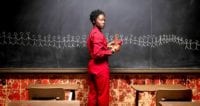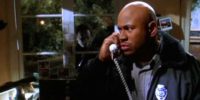Grimmfest describes Two Witches as “a dazzling, discomforting, hallucinogenic homage to classic Seventies European horror.” I struggled with my own interpretation of it and so was very intrigued to talk to Pierre Tsigaridis, the creative mind behind many aspects of the film, and Maxime Rançon, who wrote and produced the film with him.
Two Witches is Pierre’s first feature film as a director, after many cinematography and camera roles to date. I asked him what it was like to make that change in perspective as a filmmaker. “I always wanted to direct, rather than anything particular in the camera department,” said Pierre. “I studied cinematography because it was the best programme in the film school I went to at that time. I figured it was a way to take me to being a director, which was always in the back of my mind. I would figure out how to shoot and be as knowledgeable as I could on the technical aspects, but I would always try to do my homework on the side as a director. I wrote scripts, considered vision, acting techniques, working with actors in general. Max saw my first short, which I made in LA, and he saw that I had a directing potential, though I was struggling to show it to others. My filmmaker peers still saw me as the technical photography person. I wanted to get away from doing cameras and lights and so on, so we built on this project, a B-movie-oriented horror movie. We just rolled with it despite the limited resources, and the knowledge I had about crew work and all those other positions enabled me to fill some gaps myself. Really after that, I was able to focus on creating the story, which is what I always wanted, and what I enjoy.”
Pierre has French and American citizenship, and I asked how this dual nationality has fed into his work. “I think it must have injected a European touch to it because that’s what I was told from a lot of Americans. Max here is French too, and I guess the input that we would give each other would be probably based on our European sensibility; it’s difficult to explain. Maybe this is an example: I play the piano and use classical pieces by Liszt; towards the end of his career, he made some weird pieces of music that to me invoked witchcraft and other spooky thoughts, and I put that in the movie. I’m not sure if that’s a European way of thinking. Obviously, I was really influenced by Italian cinema, which many people have seen in the film (and I was pretty happy that they did). Italian horror movies in the ’70s were criticised by Americans because they didn’t follow a typical structure, more visuals over story. In Europe, that was more common.”
Max came in then. “We were both brought up in Europe, and I think that when we were young guys we were hardcore horror fans, but we were watching American and British movies with a European perspective. We used that perspective to make Two Witches. We had to think sometimes, ‘If we do it like that, it will look too French,’ so we changed things here and there to look more international. We were able to show all kinds of influences, so I think this was a good perspective to bring.”
Pierre commented that Max was more aware of American standards, and Pierre shifted towards the European touch. “We both watch European just as much as American movies though, and I think Europeans watch movies from all over the place: we have no issue with subtitles. I’m a big fan of Asian cinema. I don’t care where a film is from.”
Pierre and Maxime wrote the film, along with Kristina Klebe (one of their cast), so I asked them both how that partnership worked. “It worked really well,” said Pierre, “a very smooth experience. We started off with a broad idea of witchcraft, maybe possession—a movie that would be, you know, spooky. And then Max and I would spend literally hours on the phone, talking about ideas of what we would like to shoot. I had a lot of spooky events that I had collected from people around me, which we would (obviously) exaggerate and amplify like crazy, but they always started from some truth. In the beginning of the film, there’s a restaurant and an old woman there looking at someone who interprets it as an ‘evil eye.’ That happened to my Mum when she was newly married, and when someone looked at her weird it really spooked her. So we started off with that, [and] then Max and I would talk and take notes. I would be the one physically writing it into a script, then send drafts and we would talk again. When it comes to Kristina’s involvement, she would revamp the dialogue, especially in the second part of the movie, add depth and nuance to the characters that would match her personality, and the personality of her character Rebecca—and to add maybe feminine authenticity to some of the dialogue. Originally, the characters had different ages, but as we did the casting, we had to shift and rewrite some parts; eventually, she would help me a lot with those changes, making the actors and script more relevant to each other, I would say.”
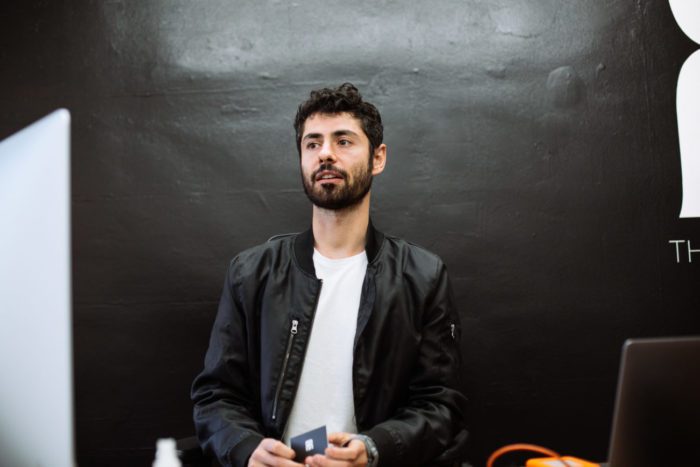
“We also spent basically hours on the phone and going out for a drink,” said Max. “We talked about what we loved in particular movies, how we thought we might bring in a spin on something. ‘It would be so much better if it was done like this,’ or adding situations to the movie. After a while, we had enough, so decided ‘let’s just do it.’”
“We tried to make a movie that we wanted to see,” added Pierre. “We are big horror fans like I said, and we asked ourselves how we might make a movie that would satisfy us, and then eventually other people might like it too.”
With another angle on the writing, Max continued, “It was an interesting experience also because of all these movies that we love and this horror genre that we love because we had to confront our financial limitations. Sometimes we talked about seeing this in this movie and it was amazing and ‘we’d love to do something like that,’ but then realised we can’t because it might take the budget for our whole movie. So that was interesting as writers, directors, producers making our first movie: we had to communicate Pierre’s vision as a director and do this within the limitations of a first feature. And we’re young. We finished this before both our thirtieth birthdays and have some limitation with our experience, so it was one hell of a project, for real.”
Turning to the film Two Witches itself, I asked where the two witch characters had come from. “The first witch, the ‘boogeywoman’ [played by Marina Parodi], came from that story my Mum told me,” said Pierre, “that mysterious woman who looked at her funny in her twenties that she never really knew. The base was really mysterious: we never had any back story or motive about why this character is ‘evil.’ So the inspiration was a broad archetype from a fairy tale, something like you’d tell kids to behave—‘This witch will come for you if you’re not nice.’ In that sense, the biggest inspiration to that character was a full-fledged villain who is simply mysterious and spooky, no real person, thank God! There are so many boogeyman features—people who don’t talk like Jason or Michael Myers, purely evil and powerful. We transposed their features into a woman that could maybe look normal in a restaurant but definitely isn’t normal.
“For Masha’s character [the witch in the second chapter played by Rebekah Kennedy], we wanted to do something drastically different: a character who would spook you with what she says and how awkward what she says [is]. And maybe more modern in a way, and more human. She’s a character that people could relate to. Viewers might have known or at least seen someone a little deranged like this, a little twisted. We wanted to make a big contrast in the two characters. I’m not sure if I know someone like Masha myself, but I’ve heard stories. For example, when she tells Rachel [her housemate, played by Kristina Klebe], ‘I’m a witch, and when my grandmother dies I’ll get her powers,’ this was something I was told by other people. They would spend a night with someone during a thunderstorm who told them they are a witch. That scenario is real, doesn’t involve any spells or magic, and just the idea of someone telling you ‘I’m a witch’ at night (it’s all about the delivery, of course) gives you a little shiver, right? I’ve never met a person who says this, but it happens whether they really mean it, or it’s a joke. So Masha is inspired by people I’ve heard about. Even lately, my brother and his wife were at a party and met someone who told them, ‘I can make a couple break up when I cook the right recipe.’ I don’t know if it’s true, but it’s spooky, and you can literally come across this kind of thing every day. Ask around, and you’ll find people with stories.”
Max had more insight: “Throughout our research for the witches and what was around, we subscribed to Facebook groups. I’m a member of a group for white witches, and I look at these posts by people who are convinced they have actual magical abilities through creating potions or love elixirs, things like that, and they ask advice in these groups on a daily basis. Two thousand people might give advice with a love potion recipe, and you just have to look on Facebook. We’ve seen and met people here in LA who are extremely interested in spirituality, Tarot cards, energy, and spells. Even my grandmother, in France, is psychic. She did this for a living for a long time. Many people seriously believe they have abilities.”
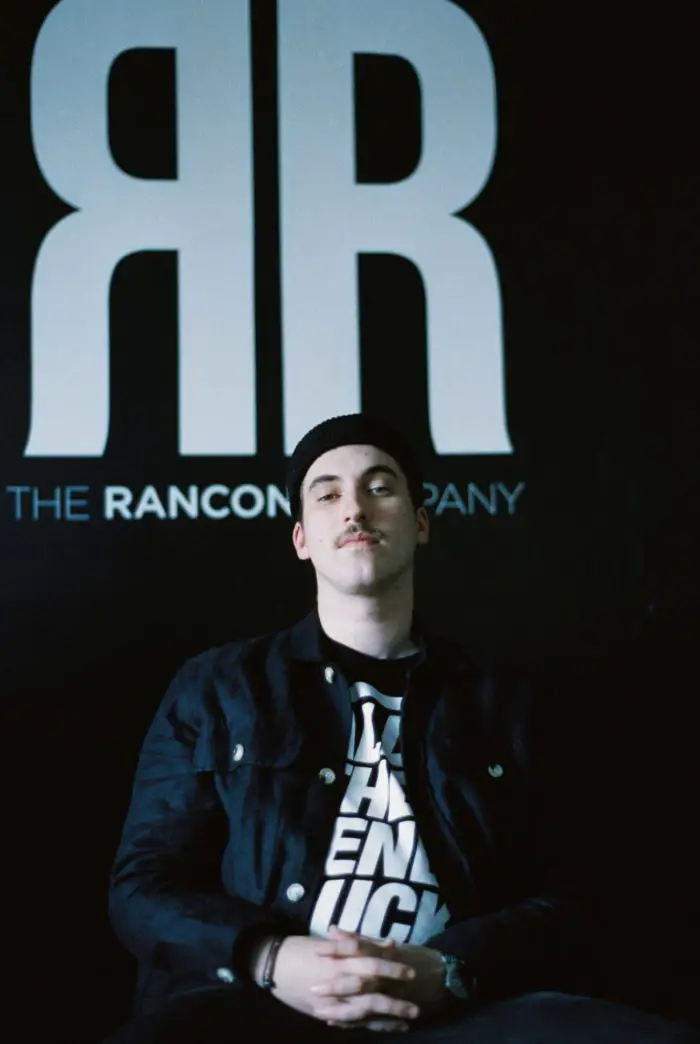
“We wanted to be as knowledgeable as we could in tackling the witchcraft subject,” said Pierre. “Though, of course, it’s a horror film, so there’s little focus on the ‘white’ magic, just the ‘black.’”
“And I think it translated into two different visions of witches,” said Max. “We have this older witch, the most powerful, perhaps the archetype of what you might expect a witch to look like. And then this younger lady who is about to get her heritage—a little awkward, but essentially a normal girl. Maybe in the future, she’ll become that old witch with experience, but right now she’s finding her powers, like adolescence, and reacting to it all. This duality is interesting, and I think Pierre directed it right.”
I then asked Pierre about the visual style of Two Witches, garish colours and fast-moving effects. What were the films that influenced him? “Probably the Italian giallo, broadly movies from the ’70s. I tried to keep it not too crazy in terms of colours, but I would still use colourful things, especially in the production design or in the candle lighting. I relied heavily on candle lighting, whether it was real candles or cinema lights. The influence would probably be mostly Italian cinema and cinemas such as Suspiria or The Beyond. In terms of fast motions, and fast [editing], I think that’s a more modern touch. I was really impressed by the modern Suspiria with the nightmare sequences that were very enigmatic but would also give you a good feel for what was going on. Sometimes when I was doing accelerated shots, I wouldn’t know which ones would work together, so I would instinctively shoot things that I had in my mind as looking interesting, then work out where to put them in the film later, like a hand reaching out or a hand behind a curtain. I wanted those shots to help me build the story; I just had to work out which way, like a puzzle. I’m also a really big fan of David Lynch and Twin Peaks, with images of faces and these awkward moments. I thought the red curtains gave a great visual effect, and they helped me to block scenes sometimes. Don’t Look Now is one of my favourite films. The character Simon [played by Ian Michaels] is a little bit like Donald Sutherland’s character. He does not believe in witchcraft whatsoever, he thinks really rationally, and eventually he’s going to pay the ultimate price for not even paying attention to his girlfriend’s concerns.” Of course, the short story starts off with an old woman looking at a couple in a restaurant.
“I think my influence comes really subconsciously,” Pierre went on, “because then when people mention something there reminded me of something, I think, ‘That’s true, I didn’t think of it.’ Then there’s Witchery, such a B-movie from the ’80s, with David Hasselhoff. These people go into a house with a witch in the attic, and she’s casting spells to each person who then die horrible ways. No one believes the kid, of course, and it’s very cheesy, not a masterpiece, but it’s got some great ideas, and it’s got loads of candles. I saw it halfway through making Two Witches, and I was surprised to see how much there was in common without having even seen it. Carrie was an influence for the character of Masha—misunderstood, and maybe her look for some degree.”
Since watching Two Witches, I had this awkward question on my mind: was there any particular message they wanted the audience to take away from the film, particularly about women? “Max and I talked about this, actually,” said Pierre. “We hoped especially now that there’s a lot of people who said they are white witches, we didn’t want to offend anyone by saying all witches are evil or anything. I think what we wanted was to create a vision like a self-aware B-movie, not too serious in tone, so we wanted to make badass female villains. I hope people don’t see anything here that’s misogynistic, but as a horror fan, I think people like baddies more than good guys, when they’re really charismatic, particularly. We were aware that there weren’t many badass female baddies, they’re more usually victims or survivors, not baddies. So I wanted to make a female boogeyman, hopefully with a place on the podium of bad guys in horror. That’s why we wanted to make it a B-movie tone, so it wasn’t anchored too much in reality; if it was more serious, it would be interpreted as a film about evil people, but we’re not trying to say anything serious. But maybe even people who call themselves white witches might think it’s cool to see a female character who’s super powerful and does whatever she wants. Hopefully, people will see it that way.”
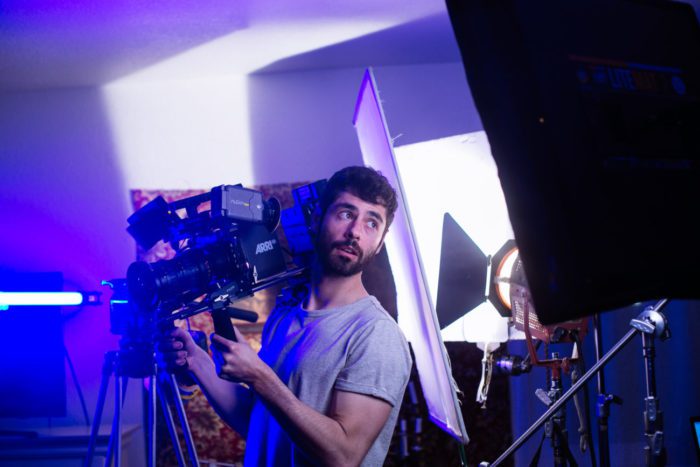
Max added, “We knew we wanted to do something about witches and witchcraft, which allowed us to use a lot of female leads. We thought that would be cool: we could make supervillains that were women, purely and unapologetically evil, like Jason, Freddy and that type. The older witch is just evil with no rationale. All this allowed us to turn the table because one option would have been to sexualise these witches and [have] the power appear sexy, but we chose not to go there, and in the end, the only person who was sexualised was the boyfriend near the end of the movie. That was another way to break the code while using women characters and making a villain-driven movie.”
The film concludes with “…to be continued,” so I asked what else is on the way. “We have a lot of ideas for these characters,” said Pierre, “at least [for] Masha and perhaps another witch (maybe Masha’s mother). We have scenes that we couldn’t include (because of budget, time, and other reasons) but could help take the story forwards, maybe give it more depth. I have a lot of other spooky stories. They keep coming, and I keep taking notes.”
“I think we say all the time when we are asked this,” continued Max, “Two Witches is actually a back story—us giving the audience context for this particular universe, and in the future, we want to do a follow-up which is bigger, darker, carrying on from what happens at the end of the movie.”
“I would have liked to develop a bit more of what this coven thinks,” said Pierre. “They’ve been around for so long, defending themselves from the rest of the world. I’ve had this line in my head: ‘For one witch to survive in this world, another witch has to be bad,’ and that could lead to a whole dynamic. We wanted to do a very villain-driven movie, where they are the stars. I don’t mean we want our victims always to die—this is no cheap slasher movie—we are entertained by how mean villains can be, and that’s what we wanted to aim at, maybe like Joker. I was always more fascinated by villains than good guys in movies, and if we give them just a little goodness, we would miss the scare.”
The UK premiere of Two Witches takes place on 8 October at Grimmfest in Manchester, and if you are unable to get there, it can also be viewed from home in the Grimmfest virtual edition on 17 October (in a double bill with Forgiveness).

